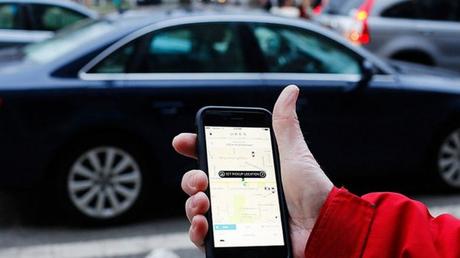
Uber confirms its interest in self-service electric bikes. Ultimately, he continues, Uber must allow "to choose the fastest or cheapest option, be it a car, a bike, the subway or other".
Pilot program
At the end of January, the company launched a pilot program in San Francisco called Uber Bike. She was associated with Jump, who deployed a fleet of 250 bicycles at the beginning of the year in the streets of the California city. "This pilot program has had a very fast start," says Khosrowshahi, in a message posted on Uber's blog. According to information on the site Techcrunch, the amount of this acquisition is close to 200 million dollars (162 million euros).
The Jump brand will be kept. His service, currently only available in San Francisco and Washington, will be integrated into the application of Uber. A map will show nearby bikes. Then simply select one to reserve. The price is fixed at 2 dollars (1,62 euro) for the first thirty minutes. Each additional minute will be charged a few cents. Once the journey is over, the two-wheeler can be attached to any public bicycle arch.
No terminals
Unlike Paris Vélib ', the system does not rely on traditional parking terminals. Instead, the bikes are equipped with a GPS, which allows customers to locate them with their smartphone. After having met with success in China, this model now wins Europe and the United States. "It's a more flexible and less expensive system that does not require any public subsidy," says Jack Song, the marketing director of Lime bike, a young company operating in nearly 50 US cities.
Several companies have launched a market assault in the United States, including Chinese giants Ofo and Mobile. Investors are flocking. Ofo raised more than $ 2 billion. If the absence of limits can save money, the economic model has yet to prove itself. These new services do not require an annual subscription and offer very low prices. In addition, damage and theft make their profitability more difficult.
Small Paths
Another obstacle is the reluctance of some municipalities to worry about the wild parking of bicycles on the sidewalks. Or who have signed exclusive agreements with a traditional actor? This is the case, for example, in New York. In San Francisco, the authorities have also long opposed the arrival of these new services. They finally granted permission to Jump, but only for 18 months. During this evaluation period, the number of bicycles will be limited to 500.
With Uber Bike, the Californian company continues its diversification process. It also follows the path set by some of its Asian competitors. The Chinese Didi, the Singaporean Grab, and the Indian Ola have recently launched self-service bicycle services. Uber hopes not to lose the market for small trips (on average, Jump's customers cover 4.5 kilometers), which could have an impact on their level of activity. The company promises to extend the platform to other cities.

